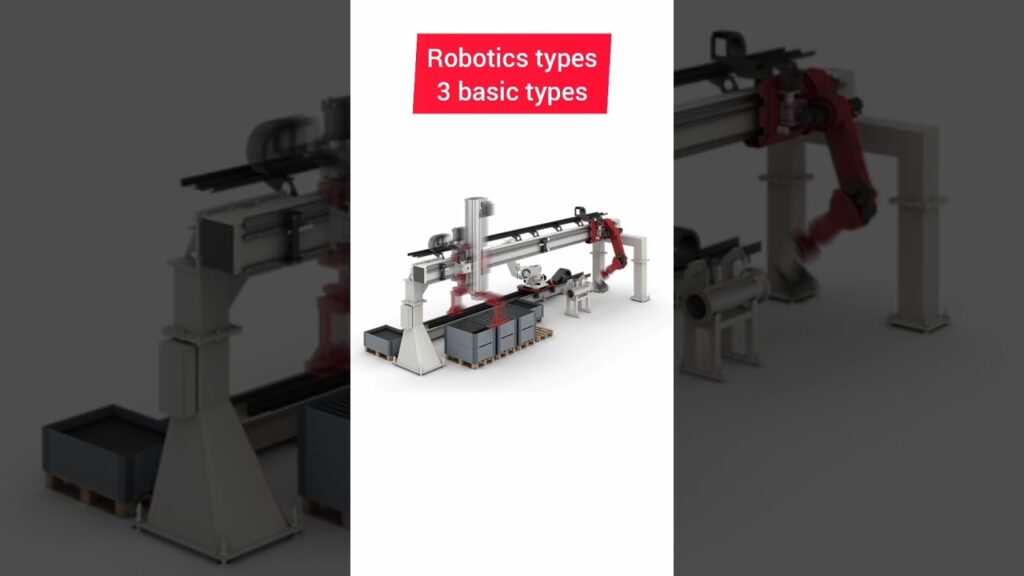Types of Industrial Robots: Exploring the Future of Robotics Motion
In recent years, the advancement of robotics has continued to astound us with its remarkable capabilities. From the sleek and sophisticated humanoids to the precision and efficiency of industrial robots, it seems that the possibilities are endless. One of the latest innovations in this field is the introduction of the new Tesla robot by Elon Musk. This groundbreaking creation has sparked conversations about the future of robotics and the potential it holds for revolutionizing various industries.
Industrial robots, in particular, have taken the manufacturing sector by storm. Their ability to perform complex tasks with speed and accuracy has led to significant improvements in productivity and cost-efficiency. But what are the different types of industrial robots and how do they contribute to the world of robotics motion?
1. Cartesian Robots
Also known as gantry robots, Cartesian robots operate by following a three-axis Cartesian coordinate system. They are highly versatile and widely used in a variety of industries, including automotive, electronics, and packaging. These robots are characterized by their rigid structure and linear motion capabilities, making them ideal for tasks that require precise positioning.
2. SCARA Robots
SCARA robots, which stands for Selective Compliance Assembly Robot Arm, are designed to perform repetitive tasks with high precision and speed. They are commonly used in assembly lines, where they can quickly and accurately assemble products. SCARA robots have multiple joints that allow them to move in a circular motion, providing flexibility and agility in their operations.
3. Articulated Robots
Articulated robots are perhaps the most well-known type of industrial robot. They feature a series of interconnected joints that mimic the movement of a human arm. This versatility makes them suitable for a wide range of applications, including welding, material handling, and painting. With their ability to reach tight spaces and handle heavy loads, articulated robots have become an invaluable asset in various industries.
4. Parallel Robots
Parallel robots, also referred to as delta robots, are popular for their high-speed capabilities and exceptional accuracy. They are commonly used in pick and place operations, such as packaging and sorting, where speed and precision are paramount. Parallel robots move in a parallel motion, with their arms connected to a fixed base through multiple parallel joints. This design allows for swift and synchronized movements, making them efficient in performing repetitive tasks.
With the introduction of the new Tesla robot, the landscape of industrial robotics is set to undergo a revolutionary change. Elon Musk’s vision for humanoid robots presents exciting possibilities for the future. These robots, designed to perform a range of tasks previously reserved for humans, could potentially reshape the way industries operate. From assembly lines to hazardous environments, the Tesla robot aims to enhance efficiency and reduce human involvement in risky tasks.
However, it is important to note that this futuristic prospect also raises concerns about potential job displacement and the ethical implications of relying too heavily on automation. As companies strive for increased productivity and reduced labor costs, it is crucial to strike a balance between human employees and robotic counterparts. Finding a way to integrate these technologies while prioritizing the well-being and retraining of human workers should be at the forefront of this advancement.
In conclusion, the world of robotics motion is evolving at an unprecedented pace. The different types of industrial robots, from Cartesian to parallel robots, are transforming industries and driving efficiency like never before. With the advent of the new Tesla robot and the vision of Elon Musk, the future of robotics appears brighter than ever. It is crucial for us to navigate this transformative era responsibly, ensuring that the benefits of automation are shared by both machines and humans.
Industrial Robot
Exploring the Different Motions of Robotics: Future Tesla Robots and Industrial Machines


